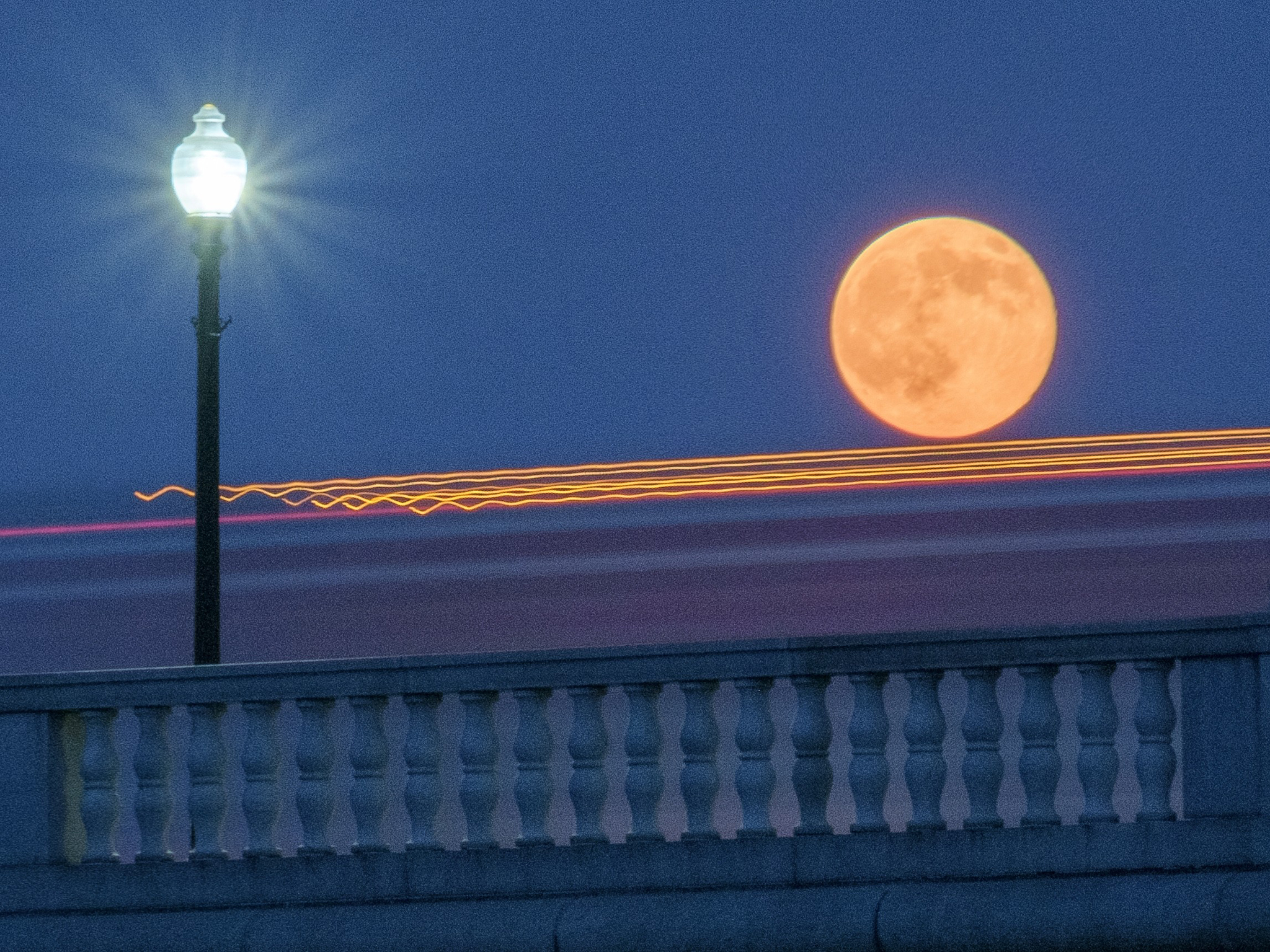Supermoon 2014: Perigee moon might make Perseid Meteor shower harder to see as astronomers await memorable event
The supermoon will appear in our skies 14 per cent bigger and 30 per cent brighter than usual

Your support helps us to tell the story
From reproductive rights to climate change to Big Tech, The Independent is on the ground when the story is developing. Whether it's investigating the financials of Elon Musk's pro-Trump PAC or producing our latest documentary, 'The A Word', which shines a light on the American women fighting for reproductive rights, we know how important it is to parse out the facts from the messaging.
At such a critical moment in US history, we need reporters on the ground. Your donation allows us to keep sending journalists to speak to both sides of the story.
The Independent is trusted by Americans across the entire political spectrum. And unlike many other quality news outlets, we choose not to lock Americans out of our reporting and analysis with paywalls. We believe quality journalism should be available to everyone, paid for by those who can afford it.
Your support makes all the difference.Scientists have warned that the arrival of the this Sunday's“supermoon” might make the annual Perseid meteor shower - the "fireball champion" of meteor showers - harder to see.
This weekend's supermoon – technical name Perigee moon – will appear in skies above Britain around 6pm on Sunday night, bigger and brighter than it has been for the last 20 years, as the moon comes within 221,765 miles of earth.
It will also coincide with the Perseid meteor shower, which began on Saturday and is expected to finish on Wednesday.
With the two events happening simultaneously, scientists are worried that the appearance of a moon, 14 per cent bigger and 30 per cent brighter than usual, could affect how well stargazer’s will be able to see this year’s meteor shower.
According to Dr Bill Cooke from Nasa's meteoroid environment office, the appearance of the supermoon may mean that some of the fainter comets might be missed.
He said: "Lunar glare wipes out the black, velvety backdrop required to see faint meteors, and sharply reduces counts.”
The Perseid meteor shower happens every August and is caused as a result of the massive Swift-Tuttle comet losing parts of its celestial body during as it enters into the inner solar system.
A study in 2008, gave the Perseids the title of “fireball champion”, saying that during a Perseid meteor shower “you will see more fireballs from Swift-Tuttle than any other parent comet.”
Nevertheless, the shower is usually best seen when conditions are clear and in areas where there is very little light pollution – a situation that will be near impossible with the extra bright moon.
Tony Markham, director of the Society for Popular Astronomy, agrees that the appearance of the supermoon may have an impact on how many shooting stars are seen on Sunday night, but remains optimistic that the Perseid meteor shower will still be a memorable event.
He said: “The Perseids are rich in bright meteors and so many Perseids will still be seen despite the moonlit sky background."
He recommended that meteor spotters minimise the effect of the moonlight by observing the sky with their back to the moon, or keep the moon hidden behind trees or a nearby building.
This Sunday’s supermoon will will be the second and largest in a trio of supermoons to appear in our skies this summer.
The first supermoon of the year occurred on 12 July and there is another one expected on the 9 September.
For more information on supermoons read this: Supermoon 2014: All you need to know about this Sunday's supermoon
Additional Reporting AP
Join our commenting forum
Join thought-provoking conversations, follow other Independent readers and see their replies
Comments